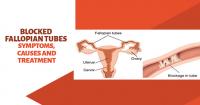Categories
Tags
-
#hair loss treatment
#hair transplant
#hair transplant surgery
#ielts
#ielts centre
#shutters
#shutter repair
#shop fronts
#hair loss
#skin care
#skin treatment
#tattoo removal
#tattoo removal surgery
#dentist
#dental implants
#dental clinics
#teeth whitening
#oral care
#curtain walling
#blocked fallopian tubes
#milk separator
#dairy machines
Archives
Recent Videos
Let's talk!
Blocked Fallopian Tubes - Symptoms, Causes And Treatment
-
We all know the intricate details of the process of fertilization by now. The woman's reproductive system comprises of ovaries, fallopian tubes, and the uterus, besides other organs. The egg is released in the ovaries and travels to the uterus through the fallopian tubes. A woman has two ovaries and two fallopian tubes which lead to the uterus. The fertilization process usually occurs when the egg, after being released as a result of ovulation travels from the ovaries to the uterus. The tubes play a crucial role in this period as a blockage in either or both results in infertility.
Symptoms and Diagnosis
The diagnosis of blocked tubes comes quite late as women seldom experience any symptom in such cases. While 40 percent of infertile women is so due to the presence of blockage in their tubes, rarely anyone of them might experience any symptom. Even the periods don't show any irregularity in this condition. Infertility caused due to blockage of fallopian tubes is termed as tubal infertility. The woman may realize that her tubes are blocked when she finds out that she can't conceive. If a woman under 35 is unable to conceive after a year of trying, the doctor will recommend the usual basic fertility tests and a specialized x-ray to check the tubes. An HSG test may also be carried out, which involves placing a small tube containing a dye into the cervix. The dyes path is then scanned through x –rays as it travels through the pelvic area. If the dye successfully travels through all parts, then the tubes are alright but if the dye stops in the tubes, then the tubes may be blocked.
How Blocked Tubes Influence Infertility
The egg is released from the ovaries once a month. It travels through the tubes into the uterus. The sperm needs to travel through the fallopian tubes to reach the egg. If the fallopian tubes are blocked, the sperm is unable to fertilize the egg as it can’t reach it. As a result, there is no pregnancy. A partially blocked tube may result in a tubal pregnancy wherein the fertilized egg starts growing in the tube itself, instead of getting implanted in the uterus. This can lead to fatal results.
Causes of blocked fallopian tubes
Pelvic inflammatory disease is one of the most common reasons for fallopian tube blockage. PID may be one of the repercussions of sexually transmitted diseases but may be present otherwise too. A past PID which has been treated may also increase the occurrence of blocked tubes. Other causes include sexually transmitted diseases such as chlamydia or gonorrhea. Uterine infection may also cause the same. A past ruptured appendix or abdominal surgery may also lead to the condition. Endometriosis, prior surgery of the fallopian tubes or previous ectopic pregnancy might also lead to the occurrence of the condition.
Treatment
Blocked fallopian tubes treatment is carried out according to the status of the tubes.
If one tube is open, then the fertility drugs might do the magic you require. But in case both the tubes are blocked, then a laparoscopic treatment might be the answer.
One can also opt for IVF if the surgery doesn't yield the desired results or the patient is ineligible for surgery. The ovum is extracted from the female body using a needle. The sperms are extracted from the male partner. The fusion of the ovum and sperm and the initial growth of the embryo take place in the lab. The healthy embryos are implanted and the patient and doctor wait for them to the implant successfully. IVF is successful in patients with blocked tubes as the role of the tubes is completely bypassed. The patient doesn't require the tubes to function efficiently so that the sperms can successfully meet the egg for fertilization. As the process of fertilization takes place in the lab, dysfunctional or blocked tubes don't really matter for the woman any longer.


